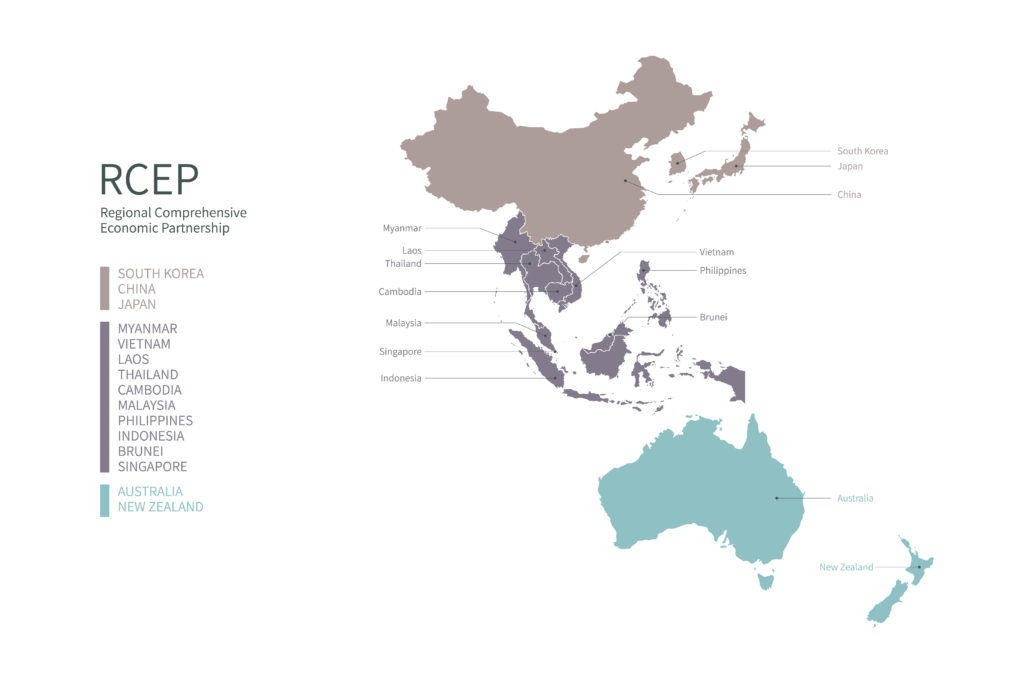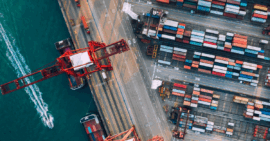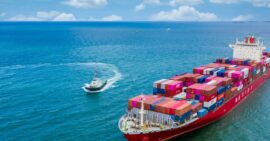With RCEP signed, Asia has come together. For the first time in history, Japan, China, Korea are in the same trade agreement. With this mega trade deal, how can companies become more competitive and maximise savings?
The Regional Comprehensive Economic Partnership (RCEP) was signed virtually in Vietnam in early November and is an ambitious regional accord brings together the ten member countries of ASEAN, China, Japan, South Korea, Australia and New Zealand under one free-trade bloc. RCEP members account for roughly 30% of global trade and GDP, making it the largest free trade agreement (FTA) worldwide. By 2030, this share is likely to go up to 50%.
RCEP is only the latest addition to the vast number of FTAs that exist between the member countries. Many enterprises started using agreements like the ASEAN Trade in Goods Agreement (ATIGA) to trade in the region since it came into force in 2010 and have expanded their footprint as newer agreements came into effect.

So what does RCEP actually mean for companies trading in the region? Why should they consider RCEP once it enters into force?
The answer is simple. Why carry the burden of managing multiple agreements, having different rules and certificate of origin procedures when you can maximise your benefits using RCEP alone?
A Thomson Reuters survey found that over two-thirds of the responding companies did not make effective use of FTAs because they found compliance too complicated. In the process, these companies were paying millions of dollars more than needed in tariffs. They struggle especially if they are using manual trade management processes. They do not have the wherewithal to draw the best benefits from an FTA, be it in terms of tariffs or trade facilitation measures.
RCEP presents a unique opportunity for companies to transform their approach to managing FTAs. Not only will they consolidate the number of FTAs the need to use, but for the first time on this scale, they will be able to take advantage of self-certification provisions that will significantly reduce the time and cost currently needed to qualify products and provide certificates of origin to customers. With an Approved Exporter status, companies will generate their own Declarations of Origin – mitigating the need to submit costs statements and apply for certificates of origin from Customs and other authorised bodies for every shipment.
Digitization to transform how enterprise manage FTAs
Using a Global Trade Management (GTM) software suite, trade, supply chain teams can simulate scenarios, analyse outcomes and decide what works best for them. A smart GTM solution can increase the number of operations handled by every team member by 10-15%.
Not only does a GTM system reduce supply chains costs by getting the best possible tariffs, but it also streamlines trade compliance workflow, eliminating manual work, and ensuring adherence to the latest regulatory changes. The software ensures that self-certified declarations by exporters are error-free and while building the audit trail. While there is sometime before the RCEP comes into force, global enterprises operating in the Asia Pacific region should use this interval to invest in a GTM software suite. This will help them reduce costs and increase supply chain velocity while effectively managing risk and achieving productivity gains in their trading operations.
Technology and content to enable you today and tomorrow
Our goal is to empower trade, supply chain and procurement professionals with mission-critical content and technology so they can get the best out of their supply chains and global trade.


